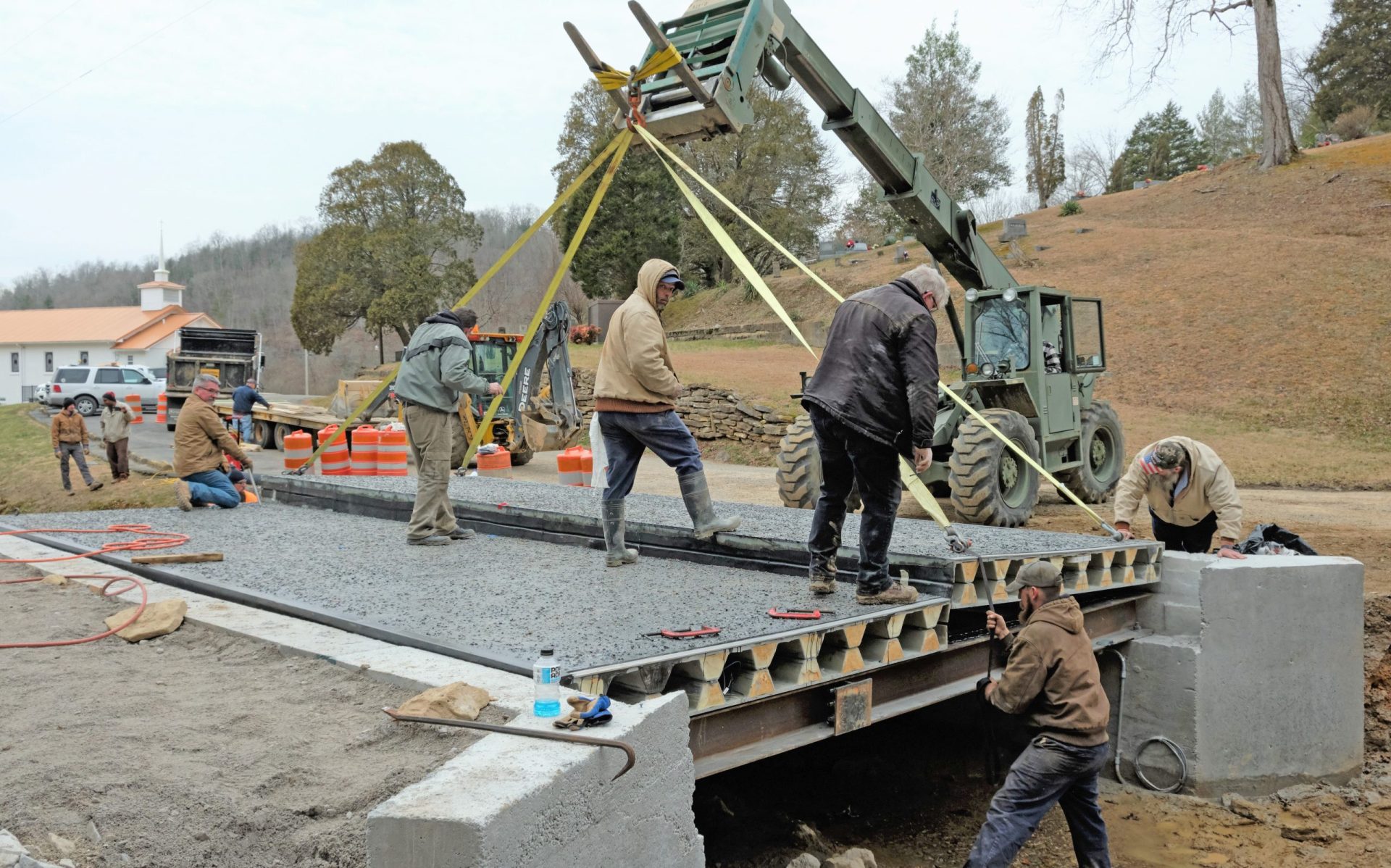
By Mark Morrison – Institute for Advanced Composites Manufacturing Innovation
On the surface, the span looks like any of the thousands of small, narrow two-lane bridges across America. This new, high-tech bridge in Morgan County, Tennessee uses G/flex® Epoxy in a fiber-reinforced polymer (FRP) composite material deck embedded with fiber optic sensors. It replaced a damaged, decades-old concrete crossing which, like thousands of low-volume bridges across the nation, was structurally deficient and outdated.
A New Way to Build
According to the American Society of Civil Engineers, about 8 percent of the more than 617,000 crossings in the U.S. are structurally deficient and need repair. FRP composites offer a low-cost, low-maintenance option. The new structure in Tennessee demonstrates the benefits of composite materials for bridgework.
Due to the use of technologically advanced materials, including G/flex, the bridge deck system requires less installation time, conserves energy and construction costs, and has a 100-year lifespan.
“This composite bridge has already made a positive impact on Morgan County,” said Highway Superintendent Joe Miller, who added that local officials were looking for a low-maintenance crossing that could be installed fast and at a lower cost than a traditionally built span. “We have numerous bridges within the county and hundreds across the state that are in need of repair and could benefit from this technology.”
An Astounding 90% Lighter Than Concrete
For Morgan County, the lightweight, easy-to-install crossing comes at no cost, courtesy of the composites industry. Tennessee-based Composite Applications Group (CAG) led the effort. Working together under the umbrella of the Institute for Advanced Composites Manufacturing Innovation, or IACMI—The Composites Institute®, almost a dozen private companies collaborated with industry organizations and university researchers to make the new span a reality.
Developed by Structural Composites Inc., the 16′ long and 25′ wide bridge deck is engineered for high strength and is 90% lighter than concrete. It uses G/flex Epoxy in its two 8′ x 25′ corrosion-resistant FRP deck panels that were fabricated off-site in a controlled environment.
Because the completed sections were so lightweight, they could be transported to the building site and installed in one day using a forklift. This required less onsite preparation, reduced the need for construction equipment, shortened the installation time, and lowered energy costs.

Raising Awareness of Composite Technology
IACMI Technology Manager John Unser, who is also vice president of the program and project management for CAG, said composites have been used for bridge deck applications for more than twenty years. They have exceeded all performance and safety standards set by the American Association of State Highway and Transportation Officials. However, he said, many transportation departments across the country, especially those from smaller jurisdictions, are not familiar with the composite technology.
IACMI and its industry partners are developing a comprehensive case study based on the Morgan County project, including comparing the total costs of a typical concrete span and one using an FRP deck. Unser said they will share the results with federal, state, and local officials, transportation departments, and the civil engineering community to help them get familiar with FRP construction.
Gaining Critical Performance & Safety Data
Researchers and engineering students from The University of Tennessee, Knoxville’s (UTK) Fibers and Composites Manufacturing Facility are part of the partnership. During production, they embedded smart fiber optic sensors developed by Luna Innovations into the surface. These high-density sensors are being used to monitor the composite deck system over time to give critical performance and safety data. This will provide a sustainable solution for aging infrastructures. In addition, wireless technology developed at UTK is remotely monitoring the response of the bridge system and traffic counts via cloud computing.
“Lack of durability data is one of the major barriers to the adoption of novel and advance materials including carbon, basalt, or glass fiber reinforced polymeric composites in civil infrastructure,” said Dayakar Penumadu, the Fred N. Peebles Professor in the Tickle College of Engineering at UT and Characterization Fellow for Materials and Processing for IACMI. “This is a major obstacle for integrating new materials and structures quickly and requires successful demonstration as is being done through this IACMI project. Bridge decks are the most damage-prone elements, and we are integrating smart sensors distributed throughout the composite deck that will provide us with valuable performance data for years to come.”

To learn more about how FRP can offer a sustainable solution to the nation’s crumbling infrastructure, visit compositebridge.org.





